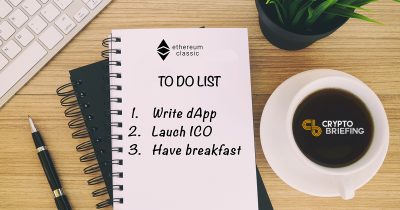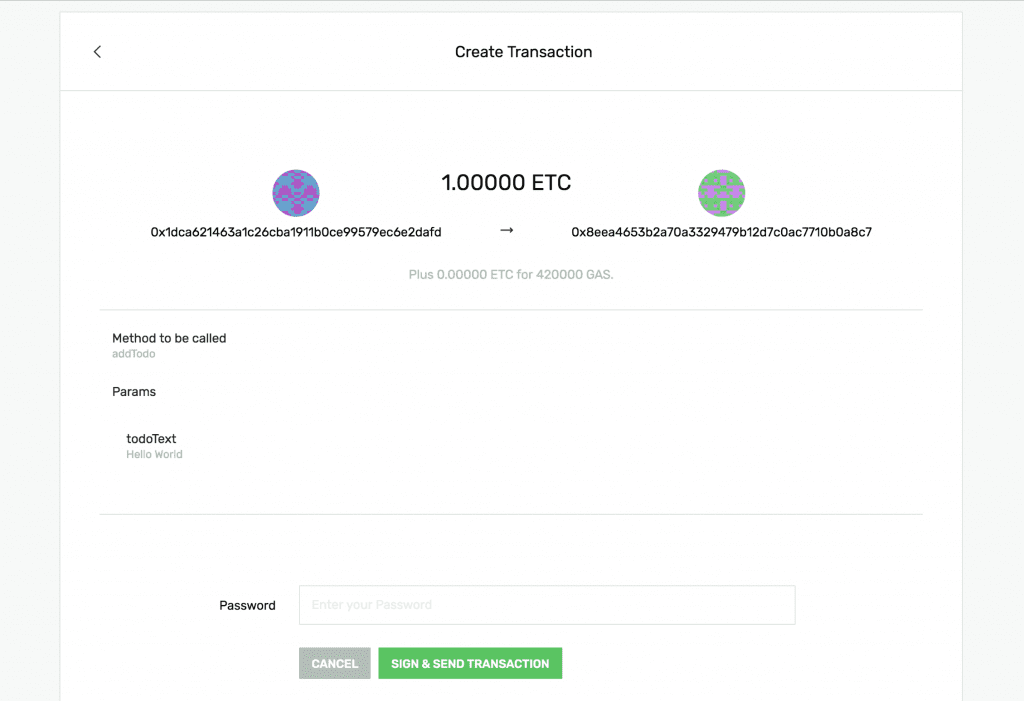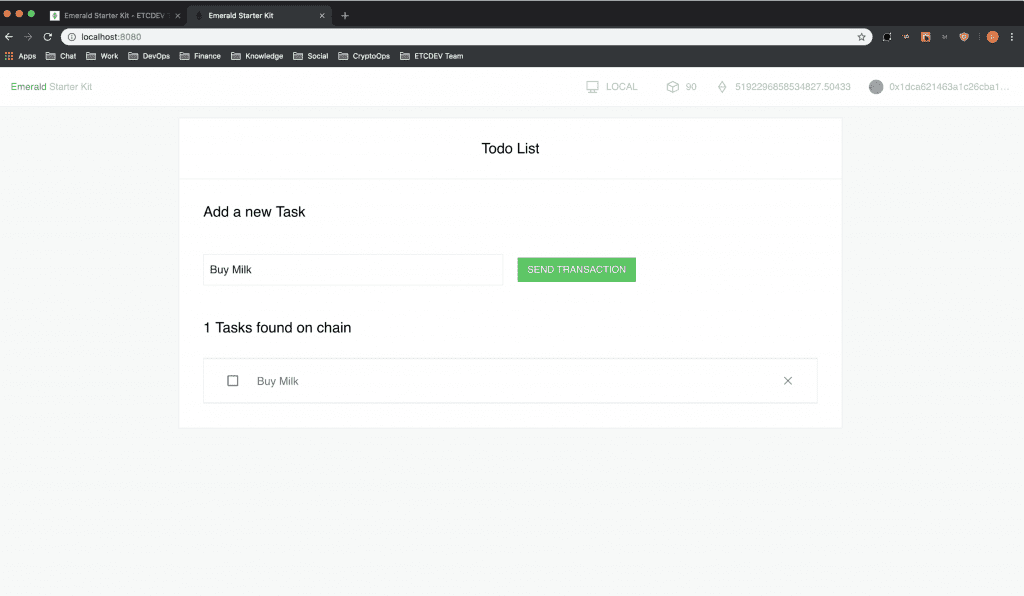I Built An Ethereum Classic DApp In 40 Minutes

Share this article
I have a soft spot for Ethereum Classic (ETC). I’ve been in regular contact with some of the project’s key developers since the summer when, to the surprise of many, ETC was listed on Coinbase. After two years of wandering in the wilderness, things finally started going right for a project that held the immutability of the blockchain as scripture.
The Coinbase listing gave Ethereum Classic the publicity it needed to ramp up its programming efforts. In mid-September ETCDev, one of the key development companies working on the platform, released the Emerald sidechain development kit (SDK). It’s a one-stop shop, with a whole array of tools and resources needed to design an ETC dApp.
The idea was to make building an Ethereum Classic dApp as easy as building a website. Projects can focus on their product, rather than the technicalities of the blockchain. “A lot of people find it hard to do dApp development,” said Stevan Lohja, ETDev’s tech writer. “Emerald means web designers don’t have to worry too much about hashing power and all the backend blockchain stuff.”
When I first spoke to ETCDev about it, Lohja was on his way to San Francisco to talk to a number of developers about using Emerald. Part of his pitch was that the SDK would be far simpler and more lightweight than the other toolkits offered on other platforms.
According to Zachary Belford, the Javascript developer who led the project, Emerald allows projects to set up a working Ethereum Classic dApp in minutes. “You can pick the tools and start building,” said Belford. “It’s like using WordPress or something, it’s the foundation that can be used by both novices and professionals.”
But can you really build a dApp that quickly? I’m no developer, and I read code as well as I speak ancient Etruscan. But during our first chat, both Lohja and Belford said that even I could build an Ethereum Classic dApp, with their assistance, in under an hour.
Challenge accepted.
My own Ethereum Classic dApp
So, earlier this week I called up Lohja to help build my own Ethereum Classic dApp. Lohja ran through all of the stuff we would cover, and made sure I had all the requisite programming materials. That meant setting up a Command Line Interface (CLI) and becoming familiar with functions which – like Terminal – I didn’t even know existed.

The dApp was built mostly using my Mac’s CLI. The instructions on the ETCDev website basically meant that all I had to do was copy code across. Lohja explained what all the bits meant, but I would be lying if I said I understood everything.
ETCDev provides a list of instructions principally designed as a step-by-step guide for developers to quickly create a dApp. A few weeks previously Lohja’s wife, who is also a programmer but not in blockchain, built a rudimentary ETC dApp with Emerald. Lohja explained that for a well-versed programmer, dApp creation can take as little as ten minutes
My own ETC dApp has a very simple function: a basic to-do list. It launched on a testnet, with a princely ‘gazillion’ ETC tokens to play with. The idea, according to Lohja, is for developers to get something up, which they can use to quickly become familiar with the basic processes. Projects can then use the list as a base to build their own dApps or start again from scratch with the programming tools provided.

On my own dApp, eloquently named “To do List,” I could put a reminder on the dApp and use some ETC from the Emerald Wallet to then place my reminder on the blockchain. In all, it took me about 40 minutes to build.
Is Emerald the jewel in ETC’s crown?
The Emerald SDK shares multiple similarities with centralized services, like Microsoft’s Azure or Amazon Web Services. The main difference is that Emerald is free and according to Lohja, far easier to use. There’s no profile set-up or subscription fees with Emerald, which is open-source. The code is also very lean, again to help early-stage developers familiarize themselves quickly with the underlying technology.
“I think one of the best aspects about Emerald is you can see the code,” Lohja said. “That’s the bread and butter for developers. If they can see the code in action, they can see how different parts work. It’s like lifting the hood of a car. They can then go about tinkering with it, understanding what they need to do to build their own dApp.”
Most Ethereum Classic dApps that are currently live are to do with gambling. ETCDev hopes that lowering the barrier to entry will diversify the type of projects using ETC. They admitted that Emerald may lead to some poor quality ETC applications, but according to Belford that wasn’t their responsibility: “Of course there’s a danger that some of the projects that begin to use Ethereum Classic will be spammy, but we’re decentralized, right? It’s not for ETCDev or some self-appointed body to go about policing the blockchain.”
“Decentralization gives people the sovereignty to make their own mistakes,” added Lohja. “Part of the tradeoff is crap ideas. It’s a free market mechanism.”
My own dApp won’t see much action; I don’t need Ethereum Classic to remember to buy milk. But the point is that even I, with no coding experience at all, can build a basic dApp. Crypto loves esoteric terminology and arcane skillsets, to the point that we often forget that mainstream society is the target audience.
Emerald serves as the first step for programmers from outside the space to become comfortable using the blockchain. If diamonds are a girl’s best friend, Emerald can be a developer’s.
Disclaimer: The author is not invested in any cryptocurrency or token mentioned in this article, but holds investments in other digital assets.
